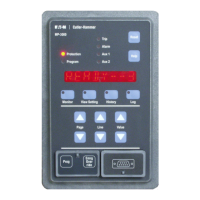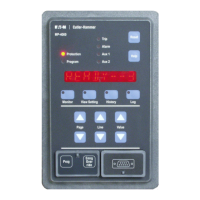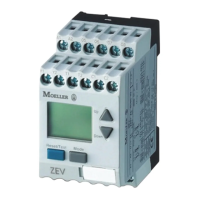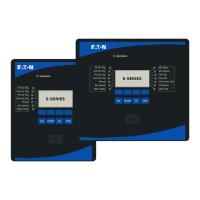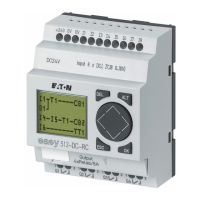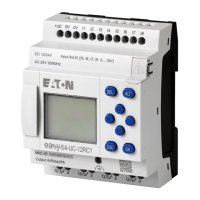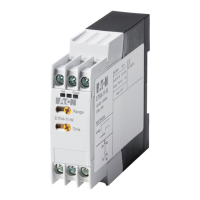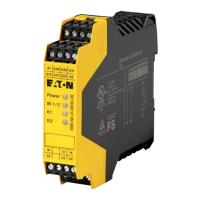Page 9-6
Effective 10/02For more information visit: www.cutler-hammer.eaton.comIL17562BH04
In applying this ride-through capability, consider the external factors:
• Typical utility feeder fault tripping and reclosing systems on
overhead medium- or high-voltage feeder lines up to 161 kV cause
interruptions of 15 to 20 cycles, especially during thunderstorms.
• For higher or extra-high voltage supply circuits to large plants,
interruptions may be longer, up to 30 cycles. Determine if the power
system has special mitigating features like multiple well-separated
sources, or local paralleled generation.
• Conventional motor contactors will drop out in 3 to 5 cycles,
stopping the motor.
• Special delayed-dropout contactors are available which store
energy, and will ride through interruptions of 15 to 20 cycles.
• Latching contactors or motor breakers may also be used—they trip
only by active unlatching or trip coil energization.
The MP-3000 will declare a motor stop after about 20 cycles of no
current. The only way to extend this time is to assign the MOTOR
STOP function to one of the discrete inputs, and connect an external
stop-indicating contact (see Section 5.6.1).
Fig. 9.1 Rotor Temperature Tracking
If the ac supply returns after the stop declaration, but before the MP-
3000 microprocessor shuts down, the relay can go through another
start cycle and return to the RUN state without ever tripping the motor.
However, this on-the-fly restart declaration won’t happen if the relay
has antibackspin or other jogging timer blocking in effect—the relay will
trip at the moment it declares a stop.
WARNING
BEWARE OF REENERGIZING MANY LARGER MOTORS AFTER AN
INTERRUPTION OF OVER 20 CYCLES BUT LESS THAN SEVERAL
SECONDS. THE INDUCED ROTOR CURRENT DECAYS SLOWLY,
YET THE ROTOR SLOWS ITS ROTATION AND DEVELOPS A LARGE
ANGULAR DIFFERENCE FROM THE DISCONNECTED STATOR
FIELD. WHEN THE STATOR IS REENERGIZED AFTER, SAY, 30 OR
40 CYCLES, THE SUDDEN TORQUE SHOCK CAN BREAK A SHAFT
KEY OR DO MORE SERIOUS MECHANICAL DAMAGE. USE A
CONTACTOR WITH AN APPROPRIATE DROPOUT DELAY.

